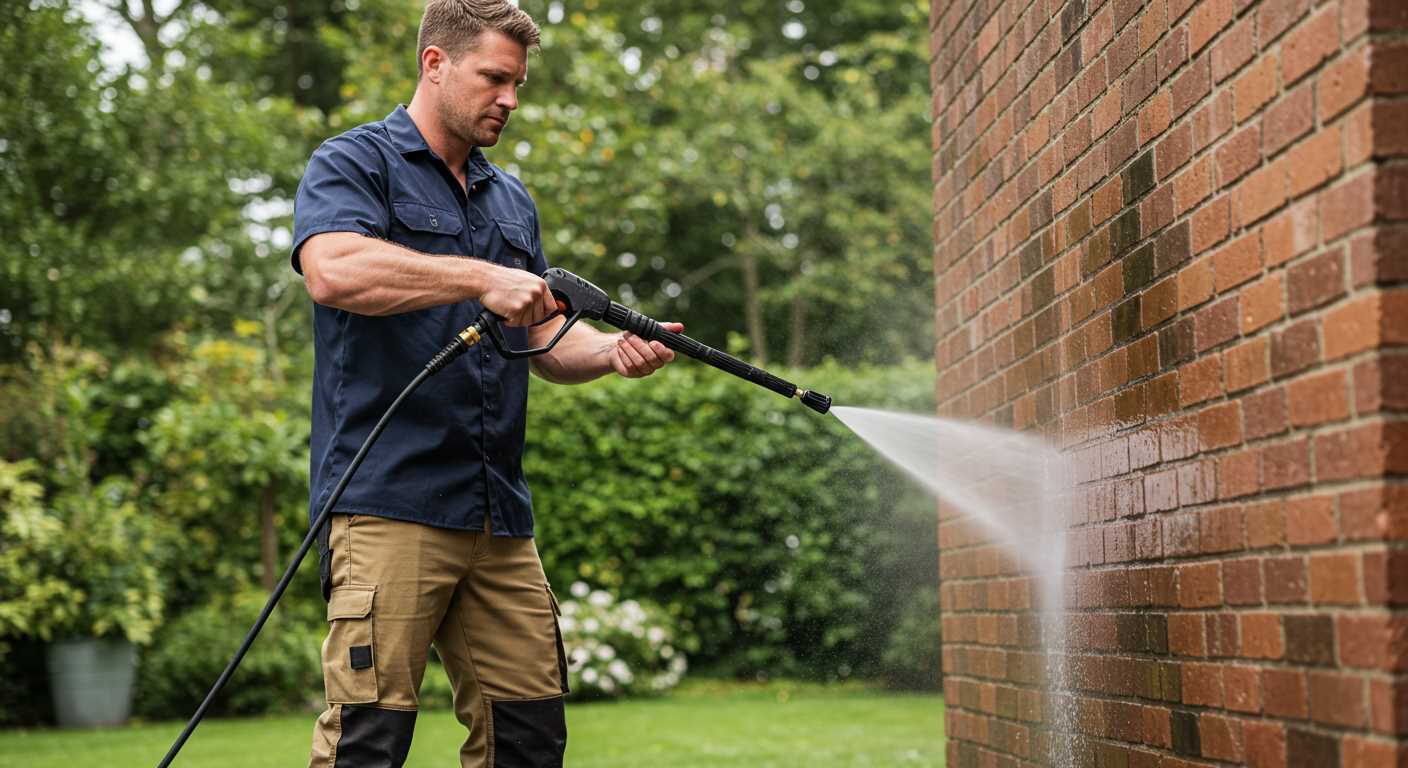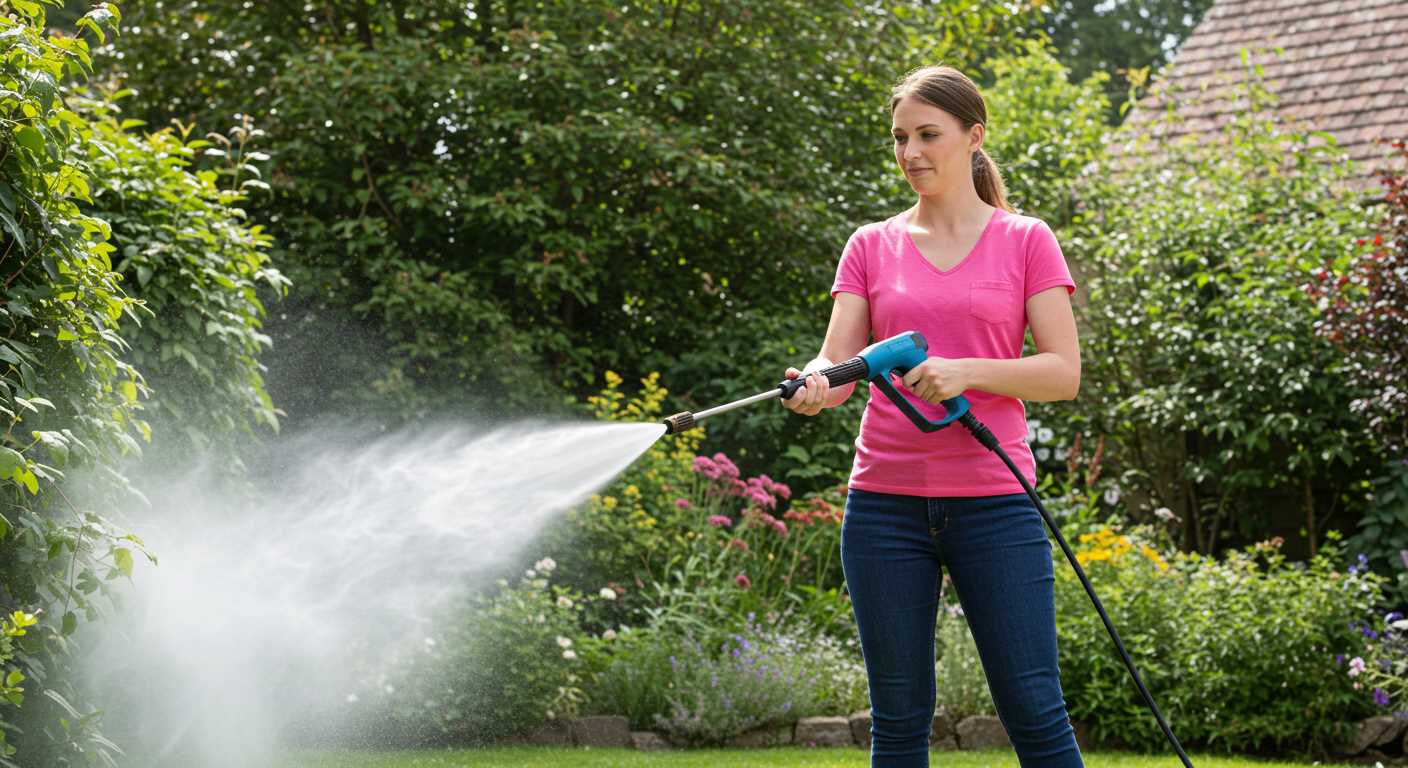

In my experience, encountering a machine with a pair of oil filler openings is more common than many would assume. Typically, one cap is designated for the engine’s lubrication, while the other serves a different purpose entirely, often related to the pump or other lubrication needs. This design provides a clear advantage in maintenance and serviceability.
It’s crucial to consult your specific model’s manual to discern the precise functions of each cap. Some units feature a shared lubrication system, where both caps contribute to the oil circulation, ensuring optimal performance across various components. Others may separate the functions, with one dedicated to oil level checks and the other for additions.
Regular attention to both caps will extend the longevity of your equipment, helping you avoid potential breakdowns. By ensuring that both reservoirs are adequately filled and maintained, you can enhance the efficiency and reliability of your cleaning machine considerably.
Understanding the Dual Filling Points
In many cleaning machines, you might encounter two distinct filling points for lubrication. One of these ports is typically designated for the crankcase, while the other serves as a refill point for the pump. It’s essential to ensure that both reservoirs are regularly checked and maintained, as they play different roles in the overall functionality.
The crankcase contains the engine oil, vital for smooth operation and longevity. Keep an eye on the oil level here, as running the engine with insufficient lubrication can lead to significant damage.
On the other hand, the separate filling point for the pump requires specific attention as it uses a different type of lubricant, often more viscous, to protect internal components during operation. Regular checks will prevent pump failure and maintain optimal performance.
Each lubrication system is designed uniquely to enhance the cleaning unit’s efficiency and durability. Following the manufacturer’s guidelines regarding maintenance routines for both reservoirs will ensure the longevity of your equipment.
In conclusion, these dual filling points exist to meet the specific lubrication needs of different machine components. Regular maintenance and proper oil type are crucial for optimal performance.
Understanding the Function of Each Oil Cap

The first cap is typically for the crankcase, allowing for easy access to check and change the lubrication for the engine components. Regular checks of this oil prevent premature wear and maintain smooth operation. Always ensure the level is within the indicated range on the dipstick to avoid possible engine breakdowns.
The second cap often serves the transmission or pump area, which requires its own lubrication for optimal performance. This oil is crucial for the functioning of the pump mechanism, providing necessary protection against friction. Changing this fluid per the manufacturer’s recommendations is essential to ensure the longevity of the pump and maintain effective cleaning pressure.
Maintenance Tips for Each Reservoir
To maintain the engine oil, I recommend performing checks every 20-30 hours of operation. If the oil appears dark or gritty, it’s time for a replacement. Use the specified type of lubrication as per the user manual.
For the pump lubrication, consult the manual for the change interval, which is usually 50 hours or once a season, depending on usage. Use quality fluids designed specifically for the pump type, ensuring compatibility and avoiding damage.
Identifying the Types of Oil Required for Each Cap
To ensure optimal performance, each of the two openings necessitates distinct lubricants. Typically, one cap is designated for the engine’s lubricant, while the other is for the pump. Selecting the appropriate fluid is critical for the longevity and efficiency of the equipment.
Engine Lubricant
The engine compartment typically requires a high-quality motor oil. Here are key specifications:
- Choose an oil with a viscosity rating of 10W-30 or 15W-40, based on the operating temperature.
- Look for oil that meets API (American Petroleum Institute) certification for added reliability.
- Consider synthetic options for enhanced performance under varying conditions.
Pump Lubricant
The pump generally necessitates a special lubricant, often referred to as pump oil. It is crucial to verify the following:
- Use oil specifically designed for high-pressure systems, avoiding regular motor oils.
- Check the manufacturer’s guidelines for recommended type and viscosity, commonly ISO 32 or ISO 46.
- Ensure compatibility with materials used in the pump seals to prevent leaks and damage.
Regularly inspecting and replacing these types of lubricants will significantly prolong the life of your unit and maintain its efficiency during use. Always consult the owner’s manual for your model for the most precise information on oil types required for each cap.
How to Properly Fill and Check Oil Levels
To maintain optimal performance, I recommend checking and filling lubricant as follows:
Step-by-Step Guide
1. Ensure the equipment is turned off and cooled down. Safety should be a priority.
2. Locate both filling points – one for the engine and another for the pump. Be cautious and identify the correct cap to use during this process.
3. Use a funnel when adding new lubricant to prevent spills. Aim for precision to avoid contamination of other components.
4. Fill until it reaches the specified level indicated on the dipstick or the manufacturers’ guidelines. Avoid overfilling, as that can lead to leaks or reduced efficiency.
5. After filling, securely close both caps. This prevents leakage and protects the internal components.
Checking Oil Levels
1. Regularly check levels before and after use. Pull out the dipstick, wipe it clean, and reinsert it to gauge current lubricant levels.
2. If the oil appears discoloured or gritty, it’s time to drain and replace it rather than just topping it up.
3. Ensure you dispose of used lubricant properly. Many local auto parts stores or recycling centres will accept it.
| Oil Type | Recommended Frequency of Check |
|---|---|
| Engine Lubricant | Every 5 hours of operation |
| Pump Lubricant | Every 10 hours of operation |
By adhering to these steps, you’ll ensure the longevity and reliability of your cleaning device. Proper maintenance contributes markedly to its overall efficiency and performance. Remember, a little diligence goes a long way.
Common Issues Related to Dual Oil Caps

Misunderstanding the distinct purposes of each cap often leads to operational difficulties. If the wrong lubricant is used for either compartment, it can result in reduced efficiency or even component damage. Always verify which fluid is suitable for each section before filling.
Another frequent issue arises from improper maintenance. Failing to check levels regularly may lead to overfilling or underfilling, both of which can cause serious malfunctions. Make it a habit to inspect oil levels during routine checks to ensure optimum performance.
Contamination can also be a concern. Debris entering through poorly fitted caps can compromise fluid quality. Ensure caps are secure and intact to prevent this risk. This vigilance safeguards internal mechanisms from wear caused by foreign materials.
Lastly, neglecting communication of maintenance intervals can affect the longevity of the unit. Each compartment typically has a specific replacement schedule. Make sure to adhere to these timelines to avoid potential failures down the line.
Maintenance Tips for Longevity of Your Cleaning Machine
Regularly check the air filter and clean it to ensure optimal airflow and performance. A clogged air filter can lead to overheating and decreased efficiency.
Inspect hoses and connections before each use. Look for wear and tear, cracks, or leaks. Replacing damaged components promptly prevents further issues and equipment failure.
Use the right detergent for your model. Using incorrect or abrasive cleaning solutions can damage internal parts and void warranties. Always refer to the manufacturer’s recommendations.
Store the unit in a dry, sheltered space to prevent moisture damage. If storing for an extended period, consider draining any residual water and fuel to avoid corrosion.
Check the spark plug regularly for wear. A clean, well-functioning spark plug is critical for a reliable startup and smooth operation. Replace it if you notice any corrosion or excessive wear.
After every few uses, tighten all screws and bolts. Vibration during operation can loosen fastenings, leading to potential damage or safety hazards.
Run the engine briefly after adding new fluids to circulate them properly. This ensures everything is lubricated and functioning as intended. Always check levels afterwards to ensure proper maintenance.
Familiarise yourself with the manual. Each model may have specific requirements or recommendations unique to its design. This knowledge can save time and enhance durability.
Lastly, schedule a professional service annually. An expert can identify potential issues early and perform maintenance that can significantly extend the life of the machine.
When to Seek Professional Help for Oil Cap Concerns

If you notice any unusual noises, diminished performance or visible leaks around the filling points, it’s time to consult an expert. Ignoring these signs can lead to severe mechanical issues.
Here are specific scenarios indicating professional assistance is necessary:
- Overheating: If the unit runs excessively hot, a potential oil problem may exist. An expert can evaluate lubrication issues.
- Strange Noises: Any irregular sounds during operation could suggest internal damage or inadequate lubrication that needs immediate attention.
- Oil Contamination: If the liquid appears murky or has particles, a professional should inspect internal components for wear.
- Difficulty Checking Levels: If you’re consistently uncertain about oil quantities, an inspection ensures proper function.
- Leaks: Persistent leaks around the areas where the liquids are added require a technician’s insight to prevent further damage.
Regular servicing by trained professionals can help prevent future complications. Ask for maintenance schedules and recommend periodic checks to safeguard your investment.
FAQ:
Why does my pressure washer have two oil caps?
Having two oil caps on your pressure washer is typically designed for convenience and maintenance. One cap is generally for adding oil, while the other is used for checking the oil level. This dual-cap system can simplify the process of ensuring that the engine has adequate lubrication. When performing maintenance, you can easily add oil without needing to remove the cap that indicates the oil level, helping to prevent spills and making the job quicker.
Do I need to use both oil caps on my pressure washer?
Yes, both caps serve specific purposes. The cap for oil filling is used when you need to add new oil or replace it during regular maintenance. The other cap is meant for checking the oil level, which is critical to ensure the engine runs smoothly. Ignoring either function could lead to poor performance or even engine damage, so it’s advisable to use both appropriately.
Can I operate my pressure washer with just one oil cap?
While it might be technically possible to operate a pressure washer that has two oil caps with just one, it is not recommended. Each cap has its own role; using just one could make it difficult to monitor oil levels or to properly lubricate the engine. This might lead to inadequate oil levels, which could result in overheating or engine failure. It’s best to utilise both caps to maintain the machine’s performance and longevity.
How often should I check the oil levels in my pressure washer?
It is advisable to check the oil levels in your pressure washer before each use, especially if it has been sitting idle for a while. Regular checks ensure that the engine remains well-lubricated, reducing wear and tear. Additionally, during maintenance intervals, or if the machine is used frequently, you should inspect the oil levels and quality more often. This proactive approach will help prolong the life of your pressure washer and ensure optimal performance.







